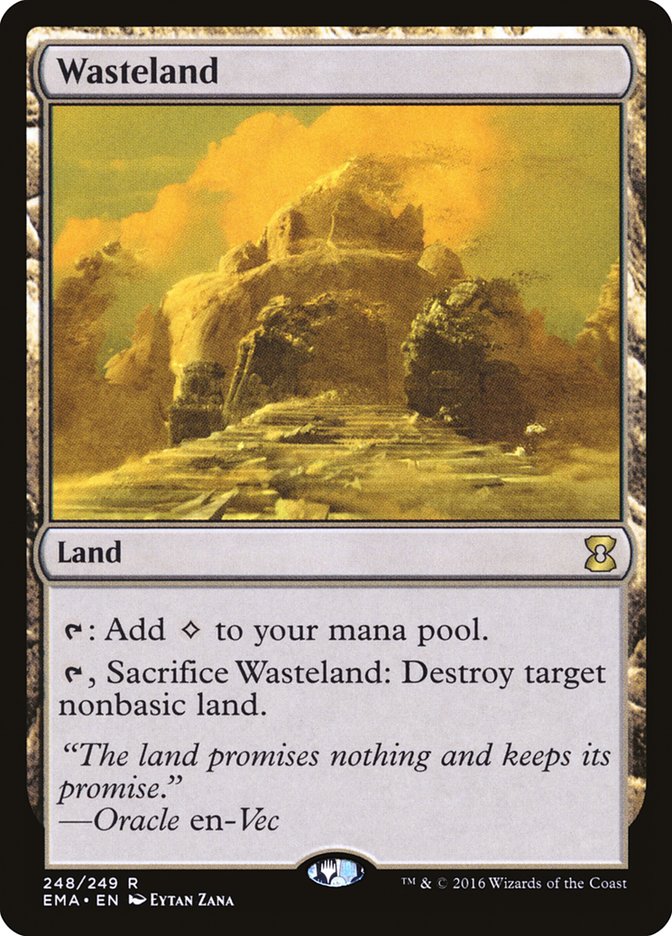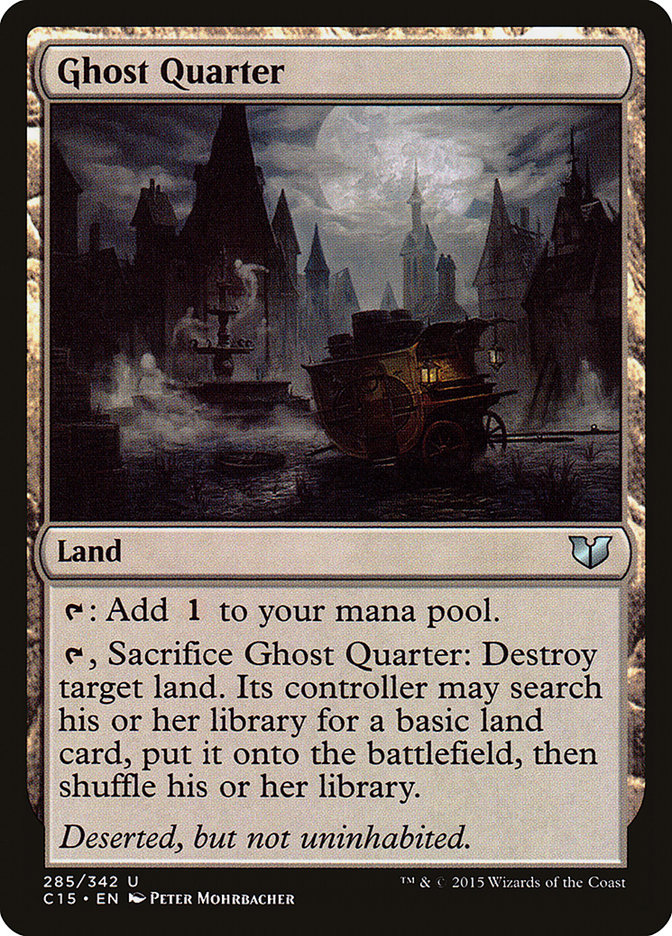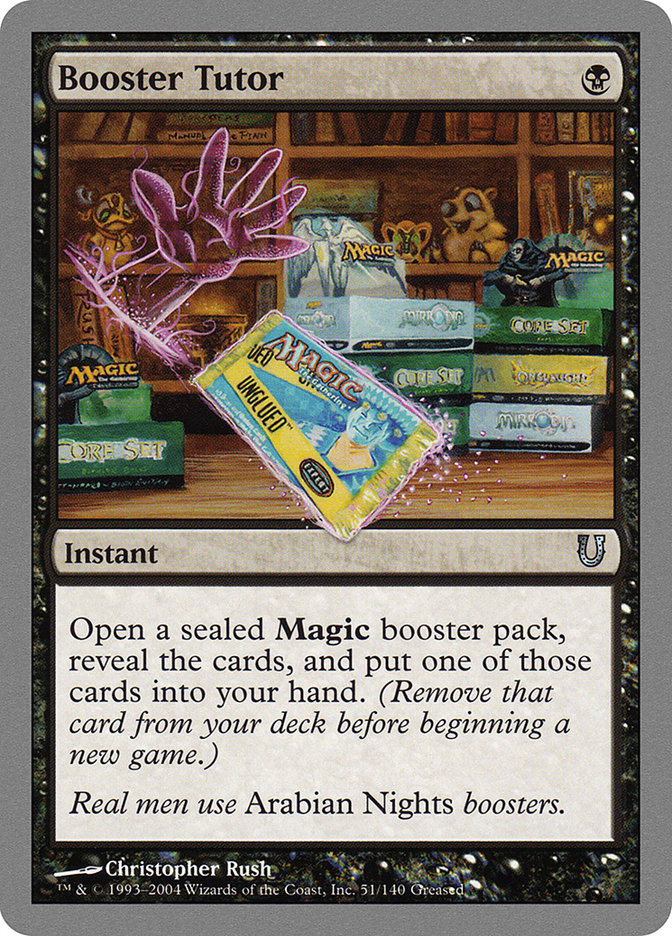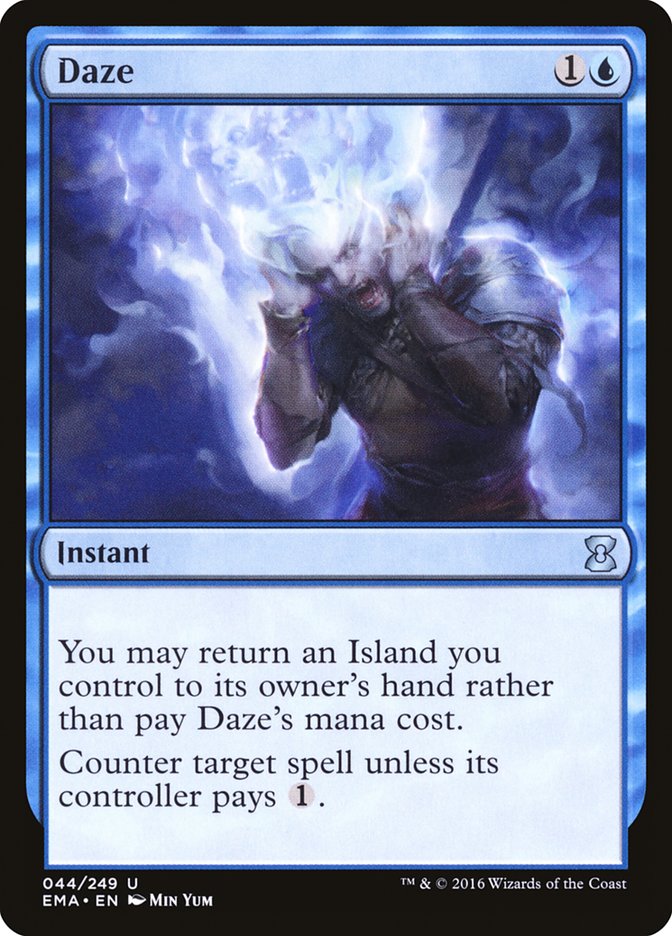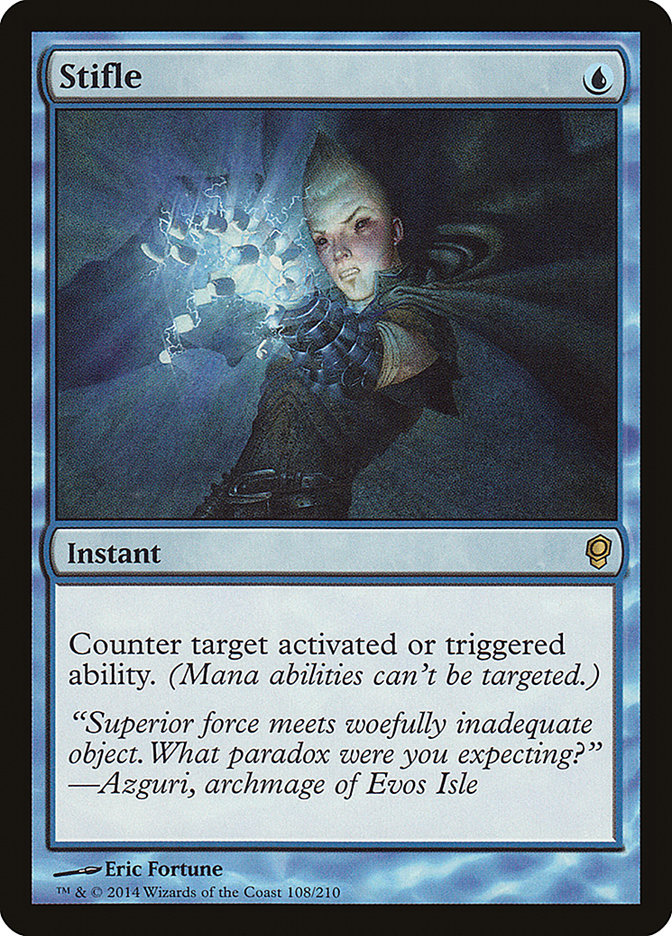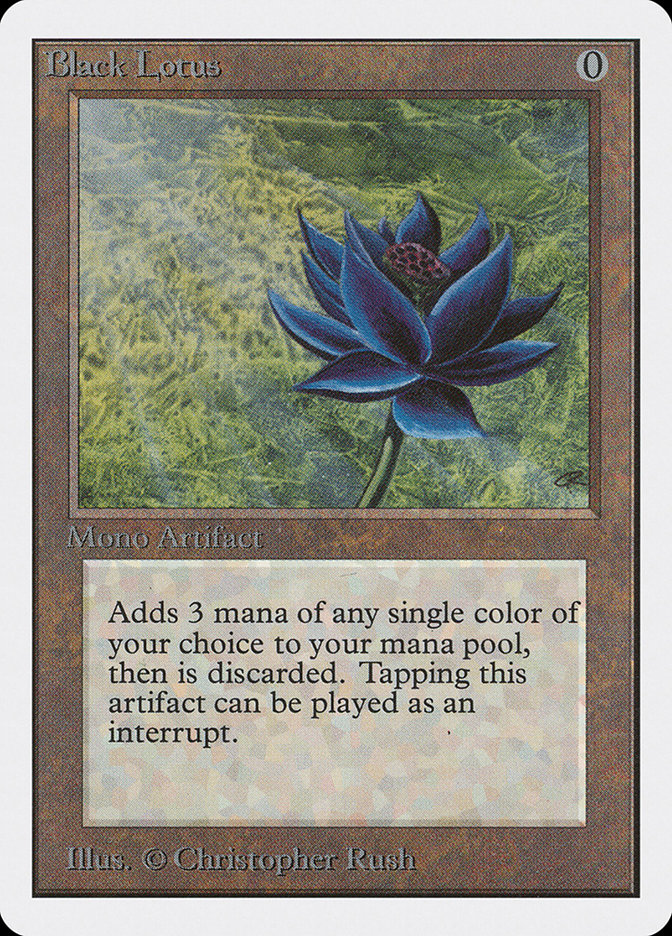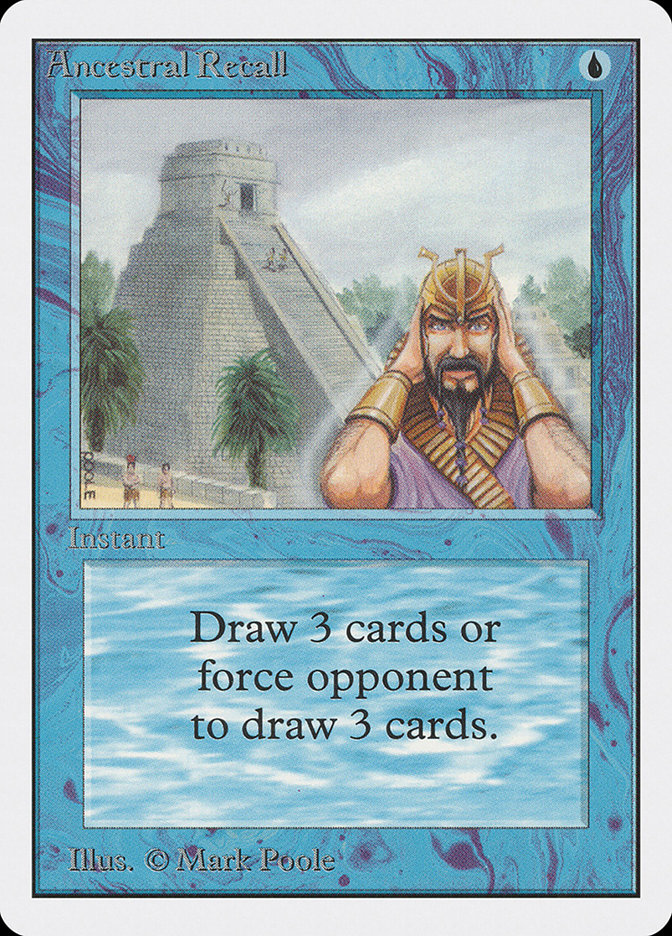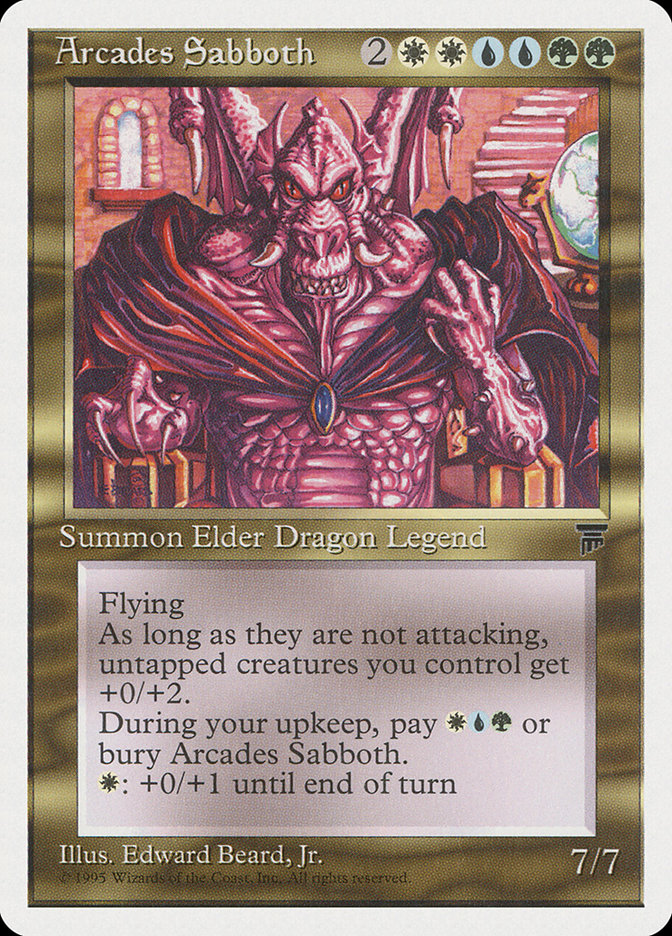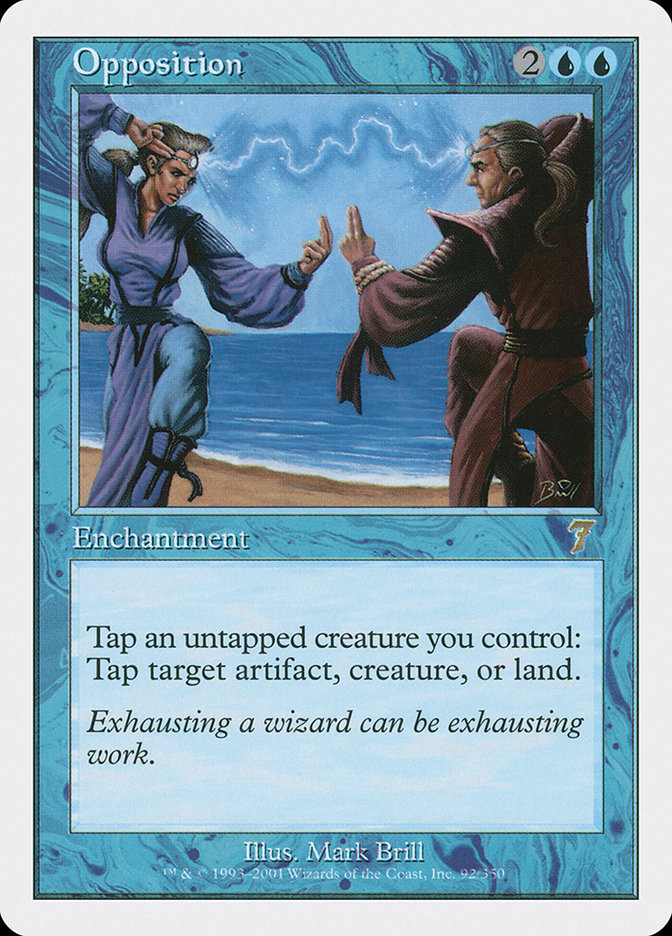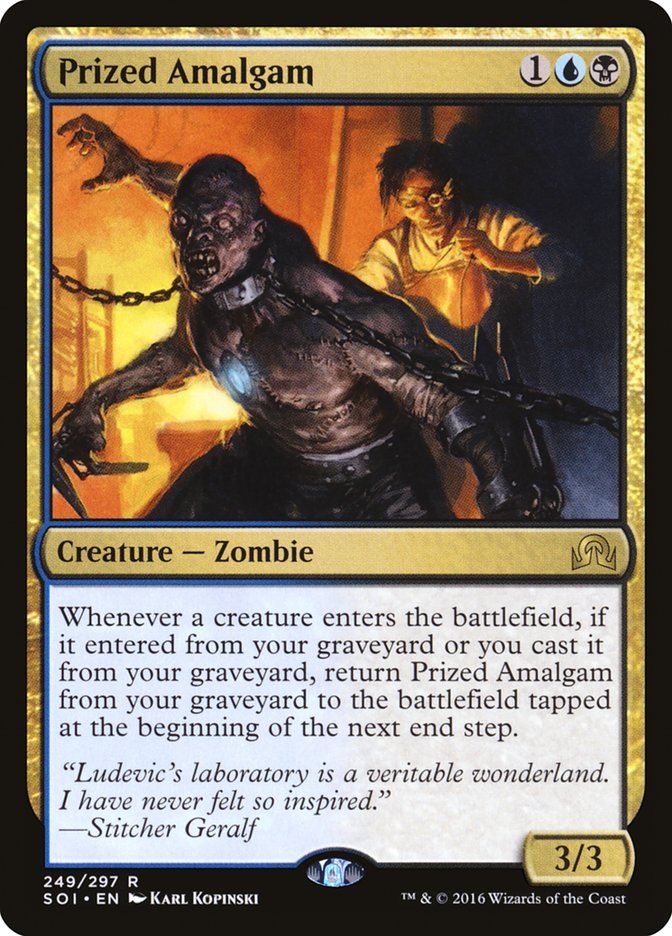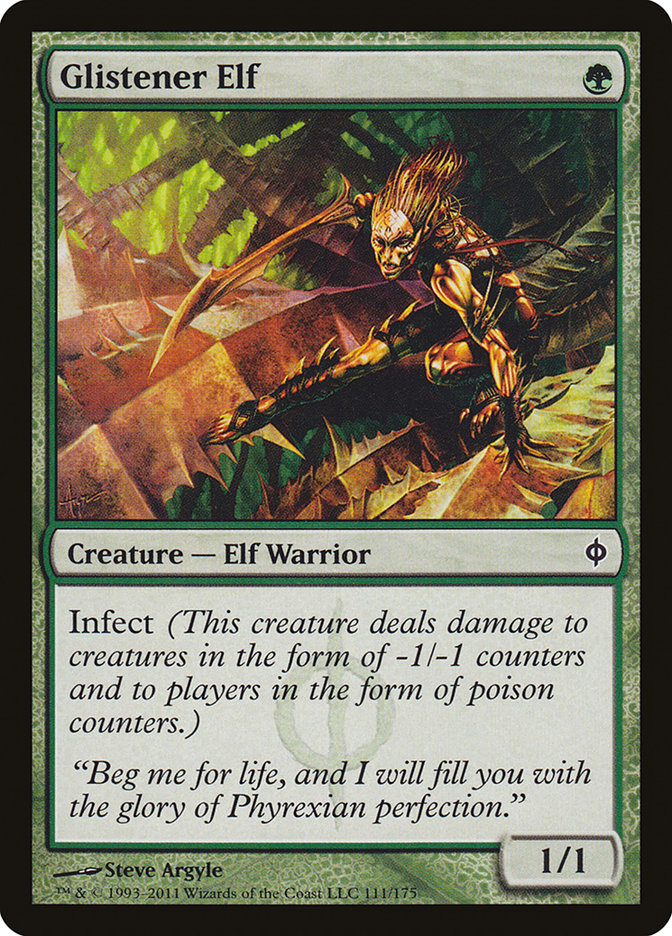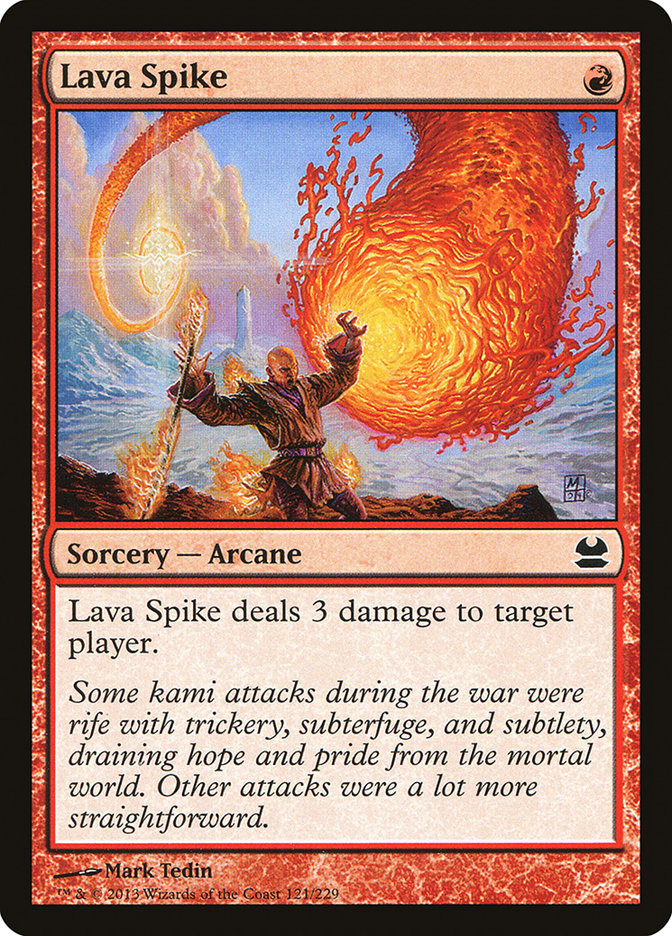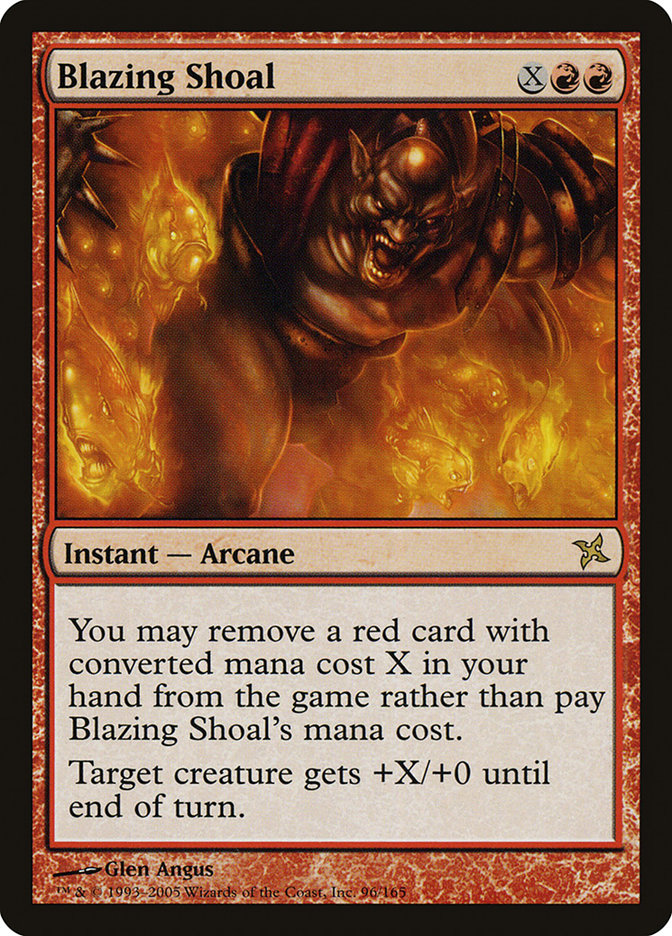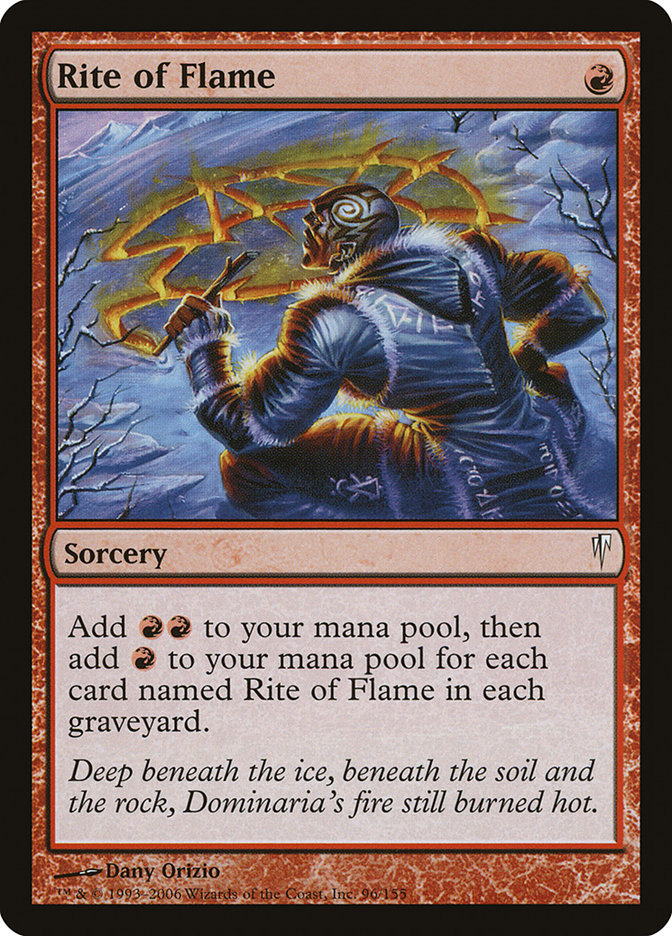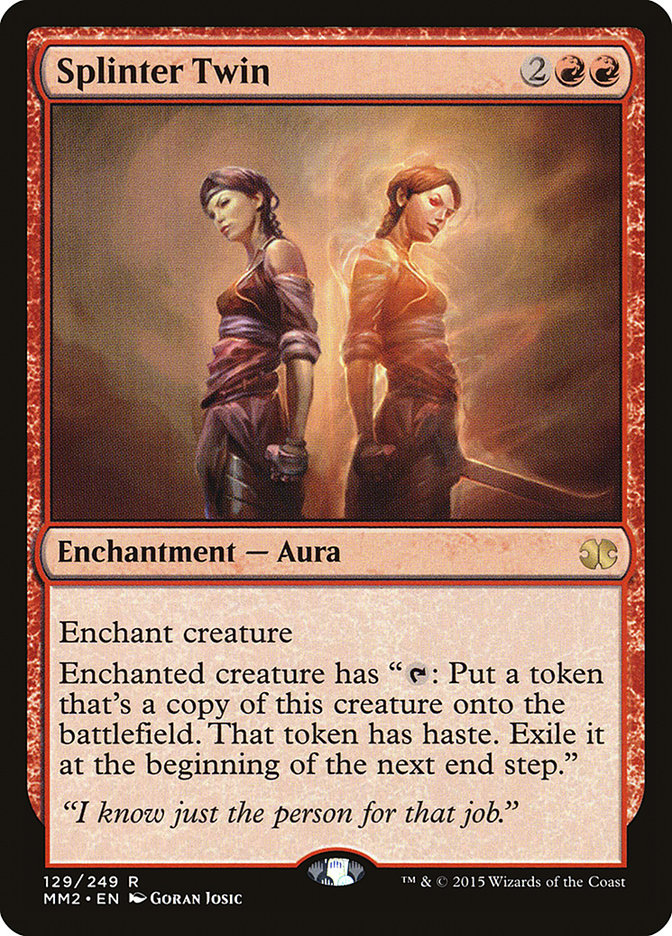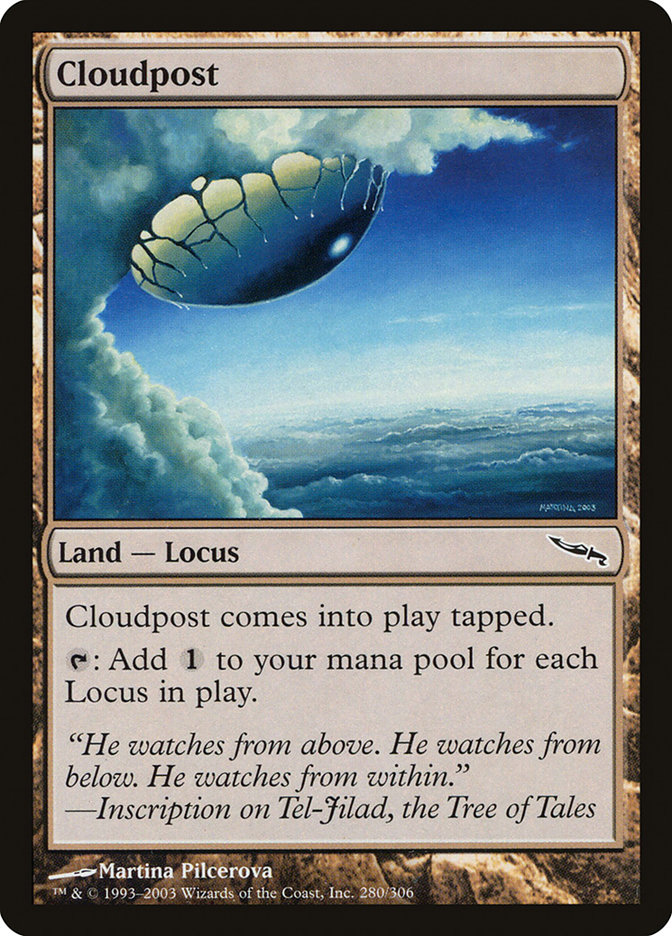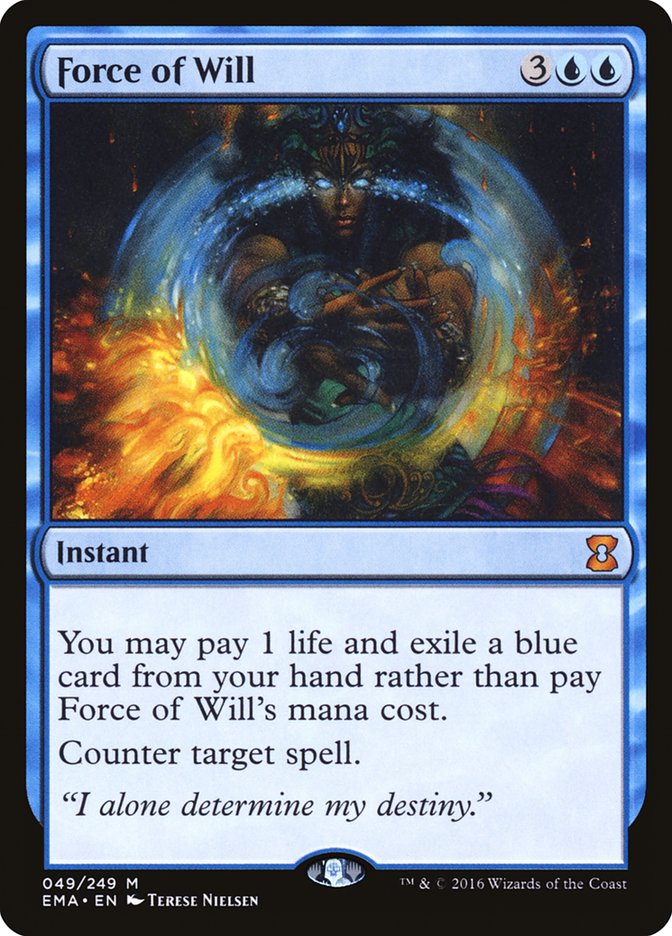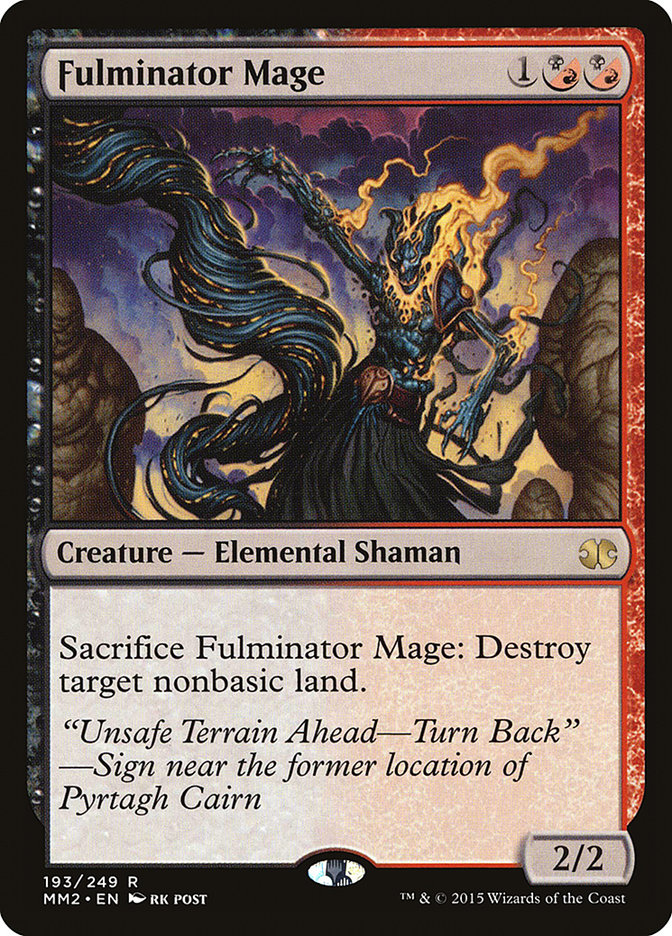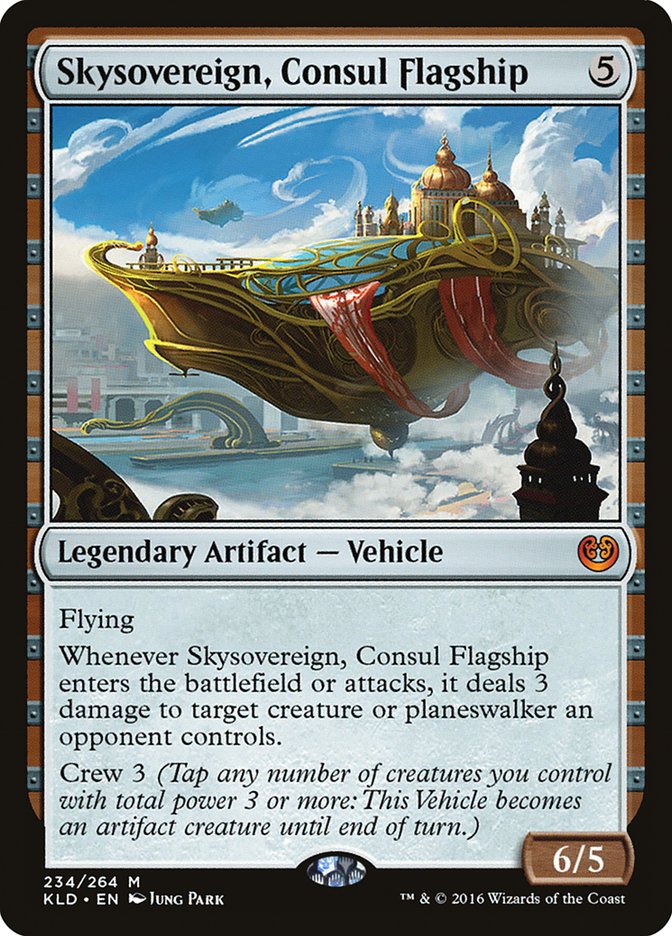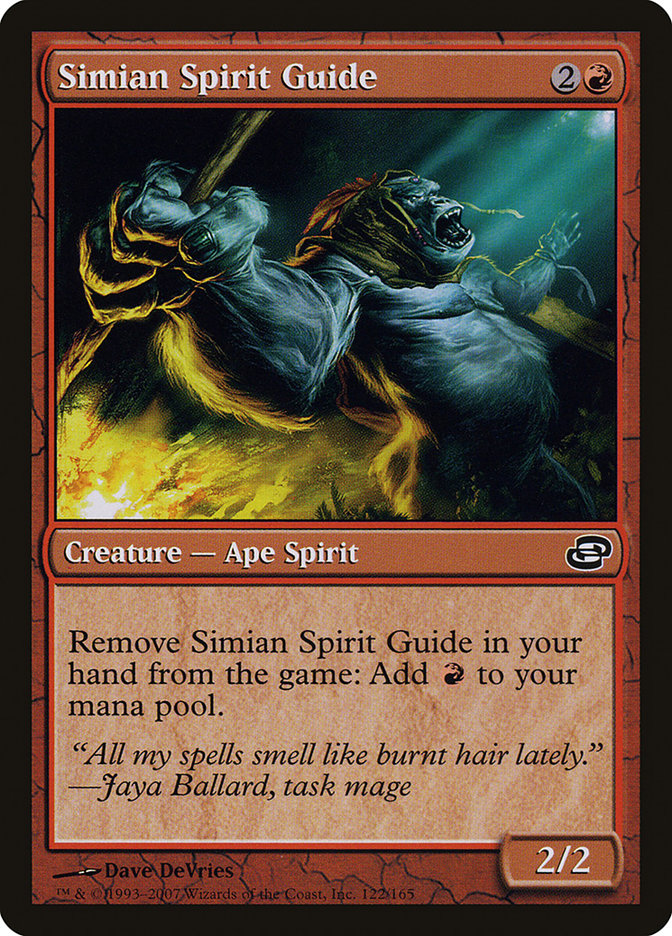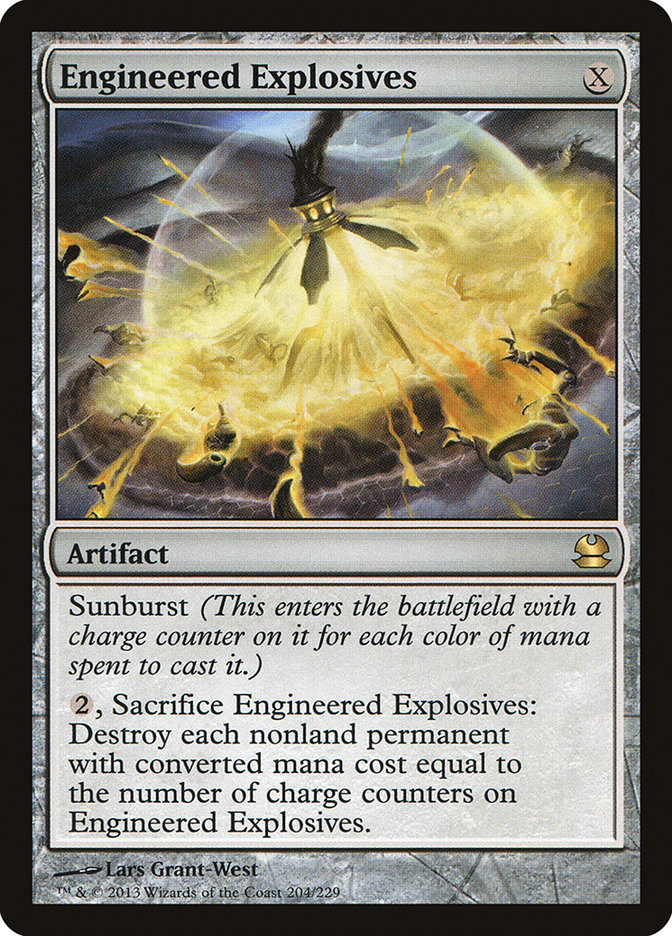Over the past couple of weeks we have seen a lot of articles hating on Modern. Todd Anderson went for the details of his experiences, while Mark Nestico wrote from the heart. I have written similar things in the past, and even more recently discussed what things I think are within range of a banning in the format.
Modern isn’t perfect. Few formats ever are.
What Modern is right now is just fine. It is actually doing its job very well.
Before deciding if the format is “bad” or “good,” we should talk about what even makes a format.
Head to Head
Each format in Magic is a competing product supplying Magic: The Gathering to players. StarCityGames.com can’t run a Modern and Legacy Classic and have the same people in both.
The reason for multiple event types is to give people the choice of what they want to play. The choice of which flavor of Magic they want to buy. When you run a Legacy event and a Modern event, you are trying to capture extra market share.
That’s the real question, not necessarily “Is Modern a good format?” but “Does Modern do something unique that attracts players?”
Unique is a big thing here. Let’s look at the selling points of the other sanctioned formats and then talk about what Modern currently offers that sets it apart.
Draft and Sealed offer low investment cost, unknown conditions, and lots of meticulous nonsense in a changing landscape. No two events start the same and you constantly have to try to derive new things in new situations.
Standard offers a similar changing dynamic to Draft, but with more consistency and choice built in. It also lets you try new things the best. If you draft Kaladesh to build your awesome Planes, Trains, and Automobiles deck, it won’t happen every time, and larger formats might smother it, but Standard lets you at least try.
Legacy offers some nostalgia and a lot of meticulous play. A lot of the best cards are very decision-heavy and there are a lot of timing details involved in them. You get heavily rewarded for figuring out all the “dance moves” and executing them properly.
Vintage is basically full-on nostalgia overload with a splash of singleton-generated uniqueness. You get to play with awesome cards like Black Lotus and Ancestral Recall, but not every game is skewed by them. The amount of card draw, free spells, and free mana also means it is really hard to be out of it unless you are Stax-locked, which leads to really dynamic games.
That’s a lot of ground already covered. What does Modern have to offer?
Looking at unsanctioned formats, the two most popular are clearly Cube and Commander. Cube is easy to pin down, as it is just mono-nostalgia with some design reward for the owner, but what is the point of Commander?
A large part of it is the social aspect of multiplayer, but that simply isn’t going to exist in competitive Magic. You don’t sit around at Grand Prix eating snacks mid-round with eight people.
The other big draw to Commander is choice. Every Commander deck is infinitely customizable. You get to do what you want in the way you want. You start with a general plan (pun intended) and go whichever way you want from there.Just look at the links at the bottom ofSheldon Menery’s articles. That is over 30 different decks from one person, and if you asked another person to build them, you would have massive differences across the board.
None of the Constructed formats I listed have this element of choice. Limited has choice, but it is often forced by the cards opened and other peoples’ choices. Standard choice is heavily driven by the best cards and what answers everyone has homogenized to that week. Legacy and Vintage have some choice, but the majority of “choose your own adventure” decks are simply non-functional relative to the best things in the format.
This brings us back to Modern. Let’s look at some of the chief complaints:
“Too many broken decks.”
“Too hard to sideboard.”
“Not enough generic answers.”
These are features, not bugs. Modern is the format where you can choose your general direction, find something that is at least reasonable, and most importantly get rewarded for making it yours and knowing your weapon.
The weird banned list and “turn 3 rule” of Modern bans serve a purpose, as do the dominance bans. You are cutting off the things that would make “strictly better” choices. You can’t justify playing a lot of combo decks in Legacy because they are just bad versions of Storm or Show and Tell decks or they can never beat Miracles in a million years. In Modern, your Tooth and Nail combo deck honestly isn’t much less powerful than whatever people consider the best that day. Maybe you are behind on power, but you are always a hand standard deviation away from winning.
This is also why cards like Bloodbraid Elf and Splinter Twin are banned. The choice aspect format is a lot better if U/R, Temur, and Grixis exist and not U/R Twin, Temur Twin, and Grixis Twin. The Bloodbraid Elf one is super-telling. At Grand Prix Indianapolis I played against four distinct Inquisition of Kozilek decks, including multiple distinct Mardu variants. If it is absolutely clear that Bloodbraid Elf is better than Siege Rhino, that can’t happen. (Aside: I’m not actually sure this is still the case, but it certainly was when the card was banned).
Maybe the exact strategy you want to play isn’t quite there, but something really close is. Let’s say you like ramping to big spells and want to play a big mana deck. Off the top of my head alone, there is Blue Tron, traditional G/R Tron, Eldrazi Tron, Amulet of Vigor, and Tooth and Nail, not to mention three very different Valakut, the Molten Pinnacle decks between Blue Scapeshift, Titan-Shift, and Titan-Breach. You can literally make a flowchart of deck selection within a specific archetype.
This isn’t just specific to ramp; there are four or five reasonable Wild Nacatl decks, four or five reasonable Inquisition of Kozilek decks, and so on.
Imagine a world where Cloudpost is legal. That card is comically superior to any of the options I just listed. You might have G/U Cloudpost or G/R Cloudpost or Amulet of Vigor Cloudpost, but those are all the same exact thing…not in principle, but in function of “Cast Primeval Titan, cast Emrakul, the Aeons Torn.”
This is also where the weakness of the generic answers comes in. Part of each strategy being reasonable at times comes from the “answer decks” not just being able to freeroll it. You see this a lot in Legacy because Force of Will is just the absolute stopper. Modern has Inquisition of Kozilek and Thoughtseize, but even those have the classic flaw, “you can’t discard the top of their deck.” In order to beat Jund, you have to fight through a lot of things, but maybe that week Master of Waves is great because everyone is on Jund with Terminate and Abrupt Decay, the next week Wild Nacatl is great because they are on Abzan with Path to Exile instead of Lightning Bolt, and then the next week some non-creature is great because they are all on Mardu with no Abrupt Decay.
On the side of answers, note that the combo decks that are allowed to exist on the more powerful side are the ones that are the most vulnerable to generic answers. Infect and Lightning Bolt is the perfect example. If you needed a Leyline of Leeches to beat Infect, that would be a big problem, but cards that are good against them are good against lots of different Magic decks. The same would not be true if Dread Return was legal and we were talking about Dredge playing at a similar raw power level.
This somewhat implies you should be moving quickly between this massive set of decks, but there is a reward for sticking to what you know best: knowledge. In a wide format, there are a lot of weird things that can happen. This isn’t Legacy-style, “When do I pull the trigger so that, when I Daze their Stifle on my Wasteland, it ends the best?” It’s just, “What does their deck do and what approach do I take?” times a hundred. You get put in weird scenarios over and over, but they are weird scenarios you could have prepared for and previously seen.
The other reward is that even this metagaming is limited by the massive set of options. There are simply too many things people could show up with to make angling hard in one direction a good idea. If things have shifted towards Dredge and Jund, being solid there is good, but retooling your deck to crush those two things is still maybe beating fifteen percent of the room.
The last point about “sideboarding being too hard?” That’s all on you. You can’t just throw three Stony Silence and three Rest in Peace in your sideboard in Modern and expect to be done, but good configurations and options exist. The key isn’t going for raw power: your deck alone should be within the same power bandwidth. You just want enough active things to make it all work. Look for overlap and you will often find it in odd places. Fulminator Mage reads like a card that beats Tron, but it is also good at picking off Inkmoth Nexus against Infect or Celestial Colonnade against U/W Control. This is why a lot of successful Modern sideboards are all one- and two-ofs and cards like Golgari Charm and Rakdos Charm are so good.
What Modern is not selling is competitive optimization the way Standard might. You aren’t going into a Modern event as a massive favorite against the whole field unless you really broke it because “the whole field” isn’t a single entity the way it is in other formats. You build your deck the best you can and see how it goes. It does suck when things don’t line up perfectly, but honestly you should be choosing decks that can afford for some imperfections along the way.
Tom Ross started to hit on a really good process last week for Modern which is worth restating here: pick your deck and master it.
Creatures (14)
Lands (21)
Spells (25)

Creatures (14)
Lands (21)
Spells (25)
- 1 Rancor
- 1 Serum Visions
- 4 Might of Old Krosa
- 4 Vines of Vastwood
- 2 Groundswell
- 2 Twisted Image
- 1 Mutagenic Growth
- 2 Apostle's Blessing
- 4 Gitaxian Probe
- 1 Dismember
- 3 Become Immense
Sideboard

Creatures (27)
- 4 Golgari Grave-Troll
- 4 Stinkweed Imp
- 2 Greater Gargadon
- 4 Narcomoeba
- 4 Bloodghast
- 4 Prized Amalgam
- 4 Insolent Neonate
- 1 Haunted Dead
Lands (18)
Spells (15)

Creatures (27)
- 4 Golgari Grave-Troll
- 4 Stinkweed Imp
- 2 Greater Gargadon
- 4 Narcomoeba
- 4 Bloodghast
- 4 Prized Amalgam
- 4 Insolent Neonate
- 1 Haunted Dead
Lands (18)
Spells (15)

A lot of the time, if you pick a powerful deck, it will be reasonable to good. When it isn’t, find another deck and do the same. Go back to your old options as they get good again and keep your old knowledge around to build new bases. If you have played Jund a lot, playing Abzan or Mardu is not going to be that much different and you will quickly pick up where you have to adjust. Eventually you will build up enough to pick up a new deck on little notice, but that takes a lot of hard work. It’s a non-rotating format; that’s kind of characteristic of those.
Modern is also not selling new cards. In theory you could design every new set to mesh into Modern, but you just get more of the new things into decks if you make the format smaller. This is why Modern isn’t part of the Pro Tour any more, not “gameplay” or anything like that. With the new rotation, every new set makes a huge difference in Standard and the Pro Tour is always able to spotlight the fresh content Wizards of the Coast actually makes to continue the game.
That isn’t to say everything is perfect. There are some cards that really push the bounds of what “playing on the same level” is. Card prices are way too volatile due to supply and demand issues from age.
But these aren’t complete structural failures. Eighteen months ago I was worried, but now that the dust has settled, I think Modern has its bearings. It might not be what everyone wants it to be, but that doesn’t matter. Modern is something people can love how it is, and that’s what makes it great.


